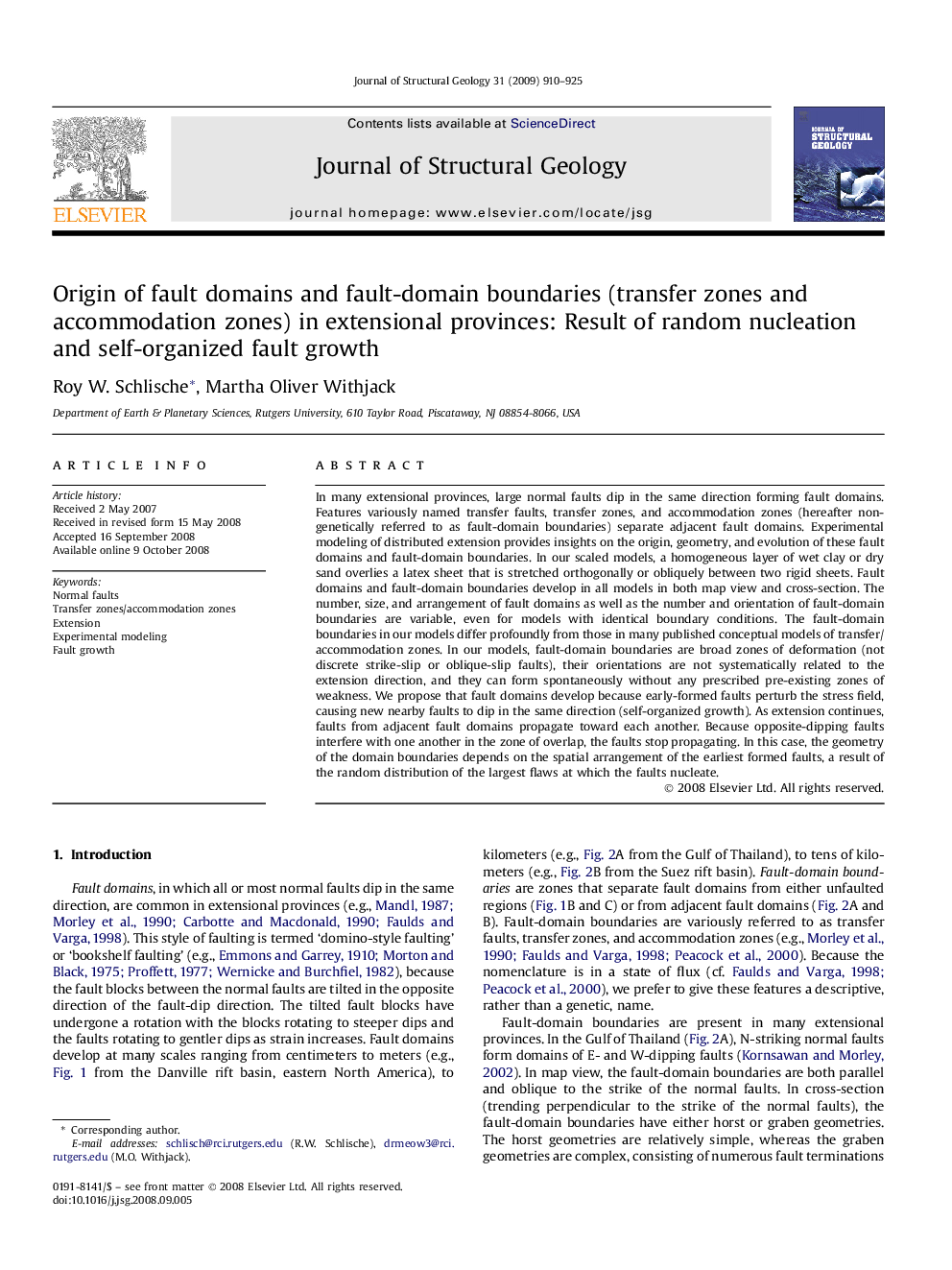| کد مقاله | کد نشریه | سال انتشار | مقاله انگلیسی | نسخه تمام متن |
|---|---|---|---|---|
| 4734205 | 1357078 | 2009 | 16 صفحه PDF | دانلود رایگان |

In many extensional provinces, large normal faults dip in the same direction forming fault domains. Features variously named transfer faults, transfer zones, and accommodation zones (hereafter non-genetically referred to as fault-domain boundaries) separate adjacent fault domains. Experimental modeling of distributed extension provides insights on the origin, geometry, and evolution of these fault domains and fault-domain boundaries. In our scaled models, a homogeneous layer of wet clay or dry sand overlies a latex sheet that is stretched orthogonally or obliquely between two rigid sheets. Fault domains and fault-domain boundaries develop in all models in both map view and cross-section. The number, size, and arrangement of fault domains as well as the number and orientation of fault-domain boundaries are variable, even for models with identical boundary conditions. The fault-domain boundaries in our models differ profoundly from those in many published conceptual models of transfer/accommodation zones. In our models, fault-domain boundaries are broad zones of deformation (not discrete strike-slip or oblique-slip faults), their orientations are not systematically related to the extension direction, and they can form spontaneously without any prescribed pre-existing zones of weakness. We propose that fault domains develop because early-formed faults perturb the stress field, causing new nearby faults to dip in the same direction (self-organized growth). As extension continues, faults from adjacent fault domains propagate toward each another. Because opposite-dipping faults interfere with one another in the zone of overlap, the faults stop propagating. In this case, the geometry of the domain boundaries depends on the spatial arrangement of the earliest formed faults, a result of the random distribution of the largest flaws at which the faults nucleate.
Journal: Journal of Structural Geology - Volume 31, Issue 9, September 2009, Pages 910–925